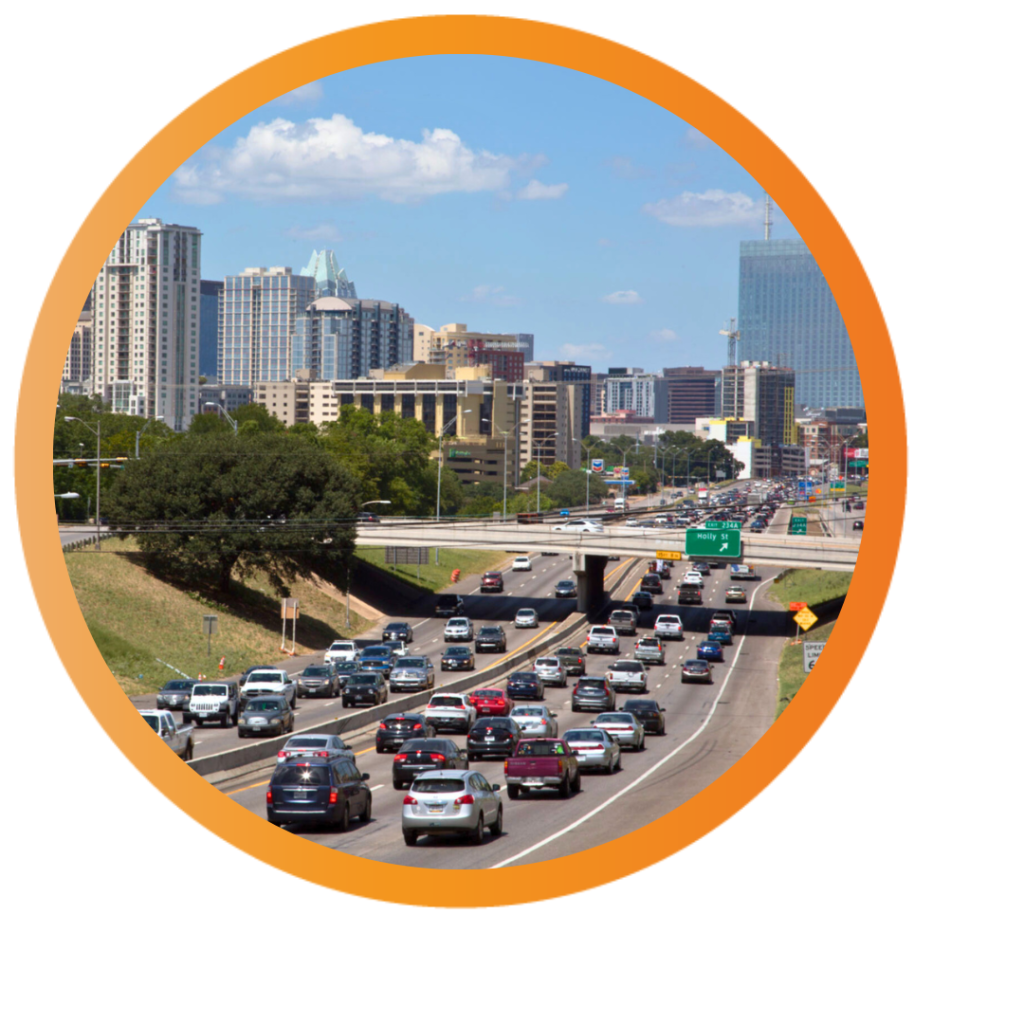Climate change is already impacting Central Texas, affecting everyone in our community and everything in the natural and built environment. For Austin, some of the impacts of climate change include:
- Higher temperatures and more heatwaves
- Extended droughts and higher risk of wildfire
- Colder winter storms
- Intense rain and flooding
- Reduced agricultural production
- Worsening air quality
To lessen the worst impacts, we must reduce greenhouse gas emissions. But what does that mean for Austin, and how can each of us contribute?
Climate Change at the Local Level
 |
What causes climate change?When we burn fossil fuels for energy, like coal and natural gas, we release greenhouse gases into the atmosphere. These gases trap heat from the sun, warming the earth. Over time, human activities like driving cars and using electricity have released more heat-trapping gases, warming the planet. |
 |
Austin's local community carbon footprintOn-road transportation and electricity used in buildings are our community’s largest sources of emissions. Because electricity is becoming cleaner due to Austin Energy’s investment in renewable energy, transportation will soon become the largest source of emissions in our community. View Austin’s Community Carbon Footprint Dashboard. |
 |
Our footprint beyond Austin's bordersAustin's consumption-based greenhouse gas profile considers emissions from the production and delivery of the goods and services purchased and consumed by Austinites, even though those items may have been produced in different parts of the world. Our consumption-based footprint shows Austin’s largest sources of emissions come from the gasoline used in our vehicles and the production and distribution of the food we eat. View Austin’s Consumption-based Emissions Dashboard and report. |
 |
City of Austin municipal footprintThe greenhouse gas emissions released from the day-to-day operations of the City government have decreased by almost 80% since 2007, mainly because the electricity used in our facilities comes from 100% GreenChoice Texas wind energy through Austin Energy. Today, our organization’s largest sources of emissions are gasoline and diesel used in the City of Austin vehicle fleet and natural gas used in our buildings. View our Municipal Carbon Footprint Dashboard. |
Curious about how to reduce your carbon footprint? Explore a list of simple actions everyone can take.
Learn more about Austin’s Climate Equity Plan to reduce our community’s fossil fuel use to nearly zero by 2040 and how we’re working to implement the plan.
Learn about climate preparedness and what you can do to be prepared for the impacts of climate change.



